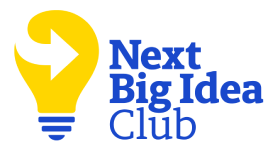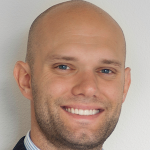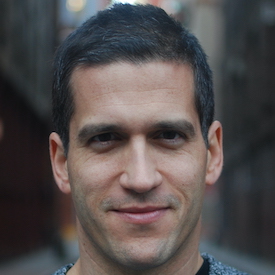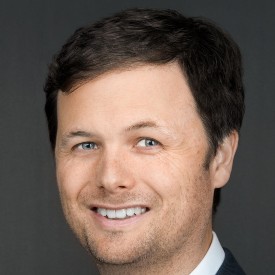Below, Scott Anthony shares five key insights from his new book, Epic Disruptions: 11 Innovations That Shaped Our Modern World.
Scott is a clinical professor of strategy at the Tuck School of Business at Dartmouth College. His research and teaching focus on the adaptive challenges of disruptive change. Previously, he spent over 20 years at Innosight, a growth strategy consultancy founded by Harvard Business School professor (and father of the idea of disruptive innovation) Clayton Christensen.
What’s the big idea?
In 1620, Sir Francis Bacon wrote that there were three technologies for which it was possible to draw a clear line before and after: the printing press, the compass, and gunpowder. Those three technologies that changed the world stretched over 1,600 years.
Today, it feels like there’s a big disruptive development every 1,600 seconds. Autonomous vehicles … augmented reality … artificial intelligence… additive manufacturing. And those are just the ones that begin with “A.”
How do we make sense of a world where change is truly the only constant? Understanding how disruptive innovation and epic change happens allows us to see the world more clearly.
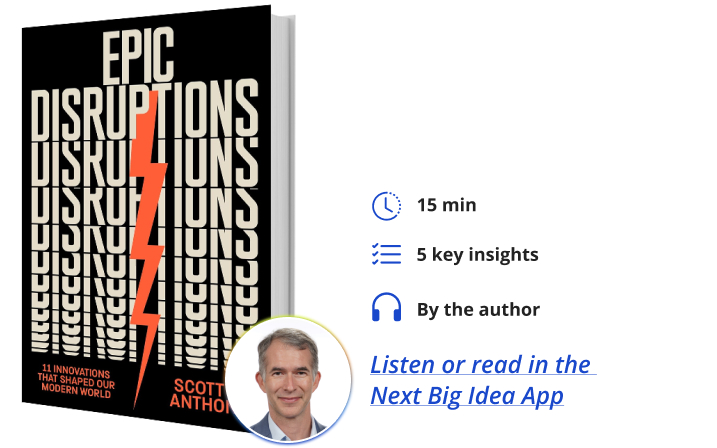
1. Disruptive innovators transform the world.
Florence Nightingale was a nurse. You might have a visual of “The Lady with the Lamp,” and that’s part of Florence’s story, but there is so much more.
Shocked by her experience in the Scutari hospital during the Crimean War, she developed a series of analyses, brilliantly visualized in polar area charts that showed the power of prevention and proper hygiene in hospitals. She wrote books explaining the essence of nursing that anyone could buy and read, and set up schools to train nurses.
What she did was disruptive innovation. Nightingale enabled a broader population to improve health standards and living conditions, focusing on prevention rather than treatment. Many of the things that we take for granted today, such as modern sewage systems or having light and fresh air during recovery, trace back to Nightingale’s work.
Disruptive innovators transform existing markets and create new ones by making the complicated simple and the expensive affordable. They open markets to broader populations that historically lacked wealth or specialized skills. They literally change the world.
2. Every story of disruptive innovation has heroes.
In the year 1437, Johannes Gutenberg was working on something in Strasbourg. No, it was not the printing press…at least, not yet. He was part of a team working on a trinket: a mirror that could capture the essence of the Holy Spirit during a planned pilgrimage in 1439.
Well, that pilgrimage was called off because of an outbreak of the Bubonic Plague. That was bad for many people, but good for the world, because Gutenberg and his team went in a different direction. They met someone named Conrad Saspatch, who had an innovative wooden press. In 1440, they combined that with a range of other things to create a working version of the printing press.
“If you have an idea that you think could be disruptive, you need to find people who will support you.”
To commercialize it, they needed customers, scale, and funding. They found a merchant named Johann Fust who gave them the capital to build their business. Fust ultimately sued them and took control of the technology, but that’s not the primary point here. The point is that every story of disruption has a protagonist, but it is always accompanied by multiple people involved. Every story has heroes, and that word is plural.
So, if you have an idea that you think could be disruptive, you need to find people who will support you. If you’re in an organization that’s seeking to have more disruptions, you need to make sure the environment supports those innovators who are going to do the work.
3. Disruptive innovation is predictably unpredictable.
In 1947, a trio of researchers at Bell Labs developed a breakthrough that would change the world: the transistor. Their goal was to create a technology that would replace vacuum tubes in communications networks. That happened, but the path to get there was unexpected.
The transistor was an imperfect product in its early days. It had the benefits of being small, rugged, and not giving off heat, but it was also unreliable. You would have to redesign a system if you were going to use it. It wasn’t good enough to plug into communications networks.
The first commercial market was in hearing aids. In 1952, the Sonotone 1010 featured a transistor. The fact that the transistor doesn’t give off heat was a huge benefit for people wearing battery packs on their waists. The fact that it’s rugged was incredibly beneficial. The limitations just didn’t matter. A couple of years later, 95 percent of hearing aids were powered by transistors, and the market had exploded.
This is a very predictable pattern. You never know exactly where disruptive innovation is going to start. Generally, however, you know it will be in a place that values it despite its limitations. That place is typically on the fringe of an existing market or in a completely new setting.
Around the same time that Sonotone was taking license to the transistor technology, chef Julia Child was dealing with a surprising setback. When we think of disruptive innovations, we don’t think of chefs, but Child changed the world of cooking, making it much easier for people to cook great French dishes in their own homes.
“Pull back and watch the full movie to understand disruptive change.”
In 1951, the French chef failed her final exam at Le Cordon Bleu. That same year, she met Simca Beck and Louisette Berthold. The two were working on a book that would bring French recipes to an American audience. They asked Julia to join the team and bring her voice to the project. She agreed.
Mastering the Art of French Cooking came out 10 years later. Success was not a straight line. There were three different publishers and one near-death experience in November 1959, in which, at the very last minute, publisher number two said this book cannot be published.
This is predictable. Every story of disruptive innovation has twists and turns and fumbles and false steps and things that look and feel like failures. You cannot predict the specifics. You can, however, predict they will happen. What separates success from failure is not how good the original idea was. It’s how the disruptive innovator deals with the journey.
When you’re trying to understand disruption, focus on patterns like this. Recognize that a single moment can deceive you. Pull back and watch the full movie to understand disruptive change. Julia Child ultimately passed her test at Le Cordon Bleu and, in my opinion, her chocolate mousse recipe is perfection.
4. Disruption casts a shadow.
Disruption is very good for some, but it can be less good for others. Particularly in the middle of a disruptive change, there can be a lot of messiness.
Back in the 1920s, Henry Ford was obsessed with his vision to create a car for the great multitude. In 1908, he rolled out the Model T. It cost $890, or about $30,000 in today’s terms. By 1924, the assembly line and lower employee turnover, facilitated by better wages, allowed Ford to dramatically decrease the cost to $260, or approximately $5,000 in today’s terms. Sales of automobiles took off.
This was good for some, but less good for others. Cities were designed for people, not for cars. There were no traffic signals. There were no rules and norms governing who could do what, and sadly, people were getting hit, injured, and sometimes killed.
Two sides broke out. The motorists said, “The problem here are the pedestrians. We’re going to brand them as jaywalkers.” Jay being slang for a country bumpkin who wasn’t very educated. They had Boy Scouts hand out cards in cities, telling people to cross at designated areas.
“This was good for some, but less good for others.”
The pedestrians fought back. They sought to brand the motorists as flivverboobs. Flivver was slang at the time for cars, and boob…well, that’s still pretty universal.
You know who won the battle. In 1924, a New York traffic warden said, “We now know about 80 percent of incidents are caused by jaywalkers.” By the late 1920s, the word ‘flivverboob’ had basically disappeared.
Disruption always casts a shadow. The middle can be very messy. You have to understand it, or it will swallow you.
5. Success with disruption requires patient perseverance.
People talk about the accelerating pace of change, but we forget that when we see a big breakthrough, there’s often been decades of work before it.
For example, in 2022 OpenAI introduced ChatGPT. It became the fastest technology in history to get to 100 million users. But by some dimensions, that technology was 67 years old, tracing back to a 1956 conference at Dartmouth College where the term ‘AI’ was coined.
Around the same time as that conference, a chemist at Corning, Don Stookey, made a surprising discovery. He accidentally set his kiln to a temperature that was way too hot. He expected a gooey mess, but instead he discovered the first synthetic glass ceramic.
Corning commercialized this in a line of kitchenware and, in parallel, launched Project Muscle to make the material clear. The result was something 14 times stronger than normal glass. But Corning couldn’t make it thin. They thought a possible market could be automobile windshields, but tests with crash test dummies showed that the head would not survive a collision with the glass because it was that strong. In 1971, after $300 million investment in today’s terms, Corning put the project on ice.
In 2007, Steve Jobs was getting ready to launch the iPhone. He picked up the prototype, and its plastic screen just didn’t appeal to his aesthetic sense. He wanted glass. He knew Corning had provided an innovative screen for Motorola’s RAZR phone. Even though Corning shut down the project, they continued experimenting and exploring, and ultimately made the glass thinner. They called it Gorilla Glass.
Steve Jobs came to Corning’s headquarters, talked to CEO Wendell Weeks, and said, “I want this, I want it at scale, and I want it fast.” Weeks said, “Great, but we can’t do it at scale and we can’t do it fast.” Steve Jobs turned on his reality distortion field and, without blinking, said, “Yes, you can. You can do it.” And Corning did. By 2024, eight billion devices had screens with Gorilla Glass. When it comes to disruption, you must be comfortable being uncomfortable because it almost always takes a lot longer than you think.
Enjoy our full library of Book Bites—read by the authors!—in the Next Big Idea App:

